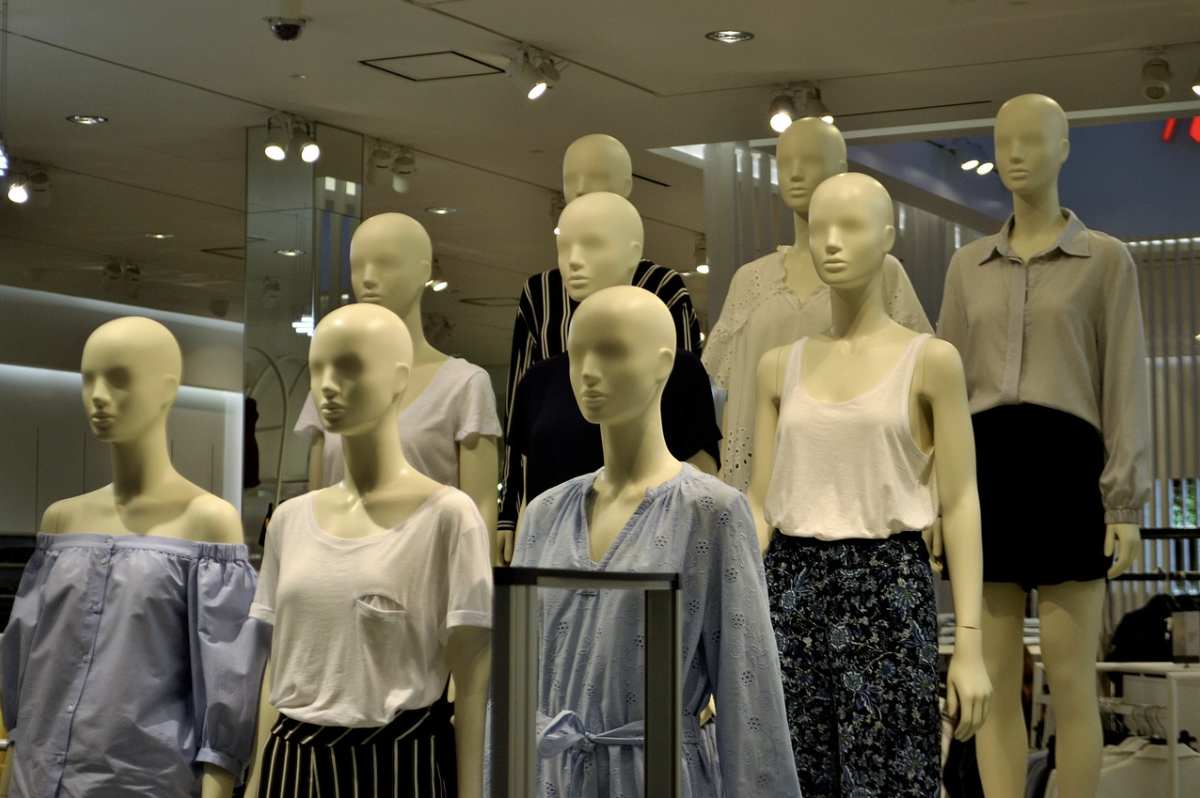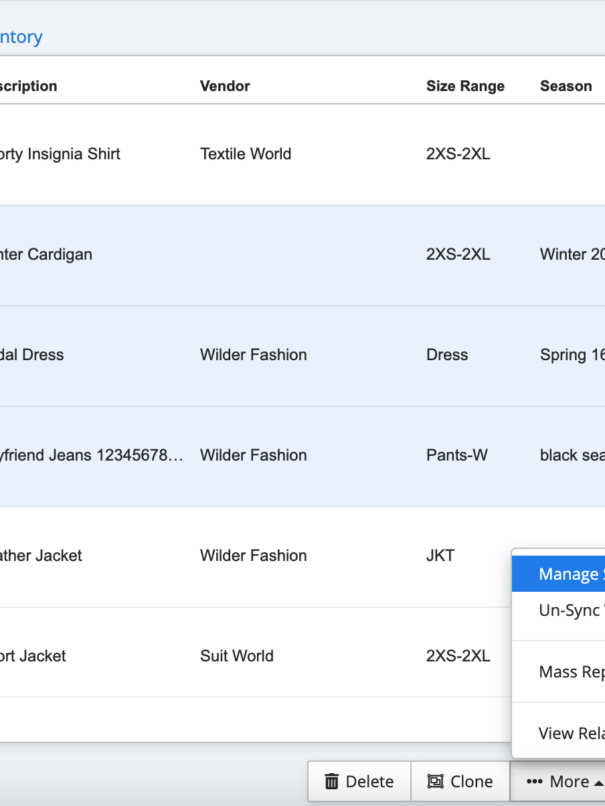As we look ahead to the landscape of the apparel industry in 2024, it stands at the brink of transformative changes. These changes, driven by technological advancements and shifting consumer behaviors, are shaping the fashion industry trends in profound ways. Traditionally marked by creativity and adaptability, this sector now faces a pivotal moment where innovation intersects with sustainability and ethical practices.
Understanding these emerging fashion industry trends is crucial for stakeholders at all levels – from top fashion executives and designers to manufacturers, retailers, and end consumers. Staying abreast of these fashion industry trends is not just about remaining competitive; it’s about seizing new opportunities for growth, adapting to changing market demands, and making informed decisions that will shape the future of fashion.

Sustainable Clothing
The apparel industry faces significant challenges related to resource depletion and waste management. The impact of these issues has propelled a decisive shift towards more sustainable practices, emphasizing recyclable and regenerative materials. This evolution, driven by increased environmental awareness and collective responsibility, sees a surge in the use of alternative textiles like fibers from agricultural waste and plant-based materials, offering biodegradable options.
These sustainable practices contribute not only to environmental conservation but also to enhancing the industry’s brand image and economic viability. Manufacturers and brands embracing green initiatives are likely to experience enhanced loyalty and cost savings, positioning themselves favorably in a market increasingly driven by eco-conscious consumers.
Artificial Intelligence in Apparel
By 2024, artificial intelligence is set to revolutionize the apparel industry, impacting stages from manufacturing and design to sales and customer experience. AI-driven systems in manufacturing will detect and correct fabric defects with high precision. In design, generative AI will foster the creation of innovative digital clothes, offering artistic and sustainable alternatives to physical garments.
AI will also enhance personalized online shopping experiences by analyzing consumer data to tailor product offerings and marketing strategies. This technological integration not only streamlines operations but opens up new avenues for creative expression and sustainable practices within the industry.
Smart Fabrics
Advancements in intelligent materials will revolutionize the apparel industry. Smart fabrics, incorporating technologies like flexible electronics, sensors, and actuators directly into textiles, lead this transformation. Graphene-infused fabrics adapt to body temperatures, while color-changing materials react to external stimuli, offering dynamic fashion possibilities. These innovations extend beyond aesthetics, providing functional benefits such as health monitoring and enhanced safety, signaling a shift towards garments that are both interactive and responsive to their environment.
Biotechnology in Apparel
Biotechnology is set to play a transformative role in the apparel industry. Leveraging biological processes, this emerging trend develops bio-based clothing and environmentally friendly manufacturing methods.
Innovations include lab-grown textiles and engineered dyes, which are more sustainable than traditional chemical dyes. These advancements represent a significant step towards eco-friendly apparel production, reducing the industry’s carbon footprint and leading the way in sustainable fashion solutions.
Gender Fluidity Plus Sustainable Practices
The shift towards gender-fluid fashion reflects a growing demand for inclusivity and diversity in apparel design, highlighting significant fashion industry trends. This movement is closely intertwined with sustainable apparel, as millennials and other environmentally conscious consumers increasingly seek eco-friendly and ethically produced clothing, aligning with the trends in the fashion industry.
Digital models are revolutionizing the shopping experience, enabling brands to cater to a diverse range of customers while also promoting sustainable practices through virtual try-ons and reduced returns. The expansion of sales channels facilitates easier access to both gender-fluid and sustainable fashion options, allowing consumers to shop according to their values and preferences. This shift is a clear example of how current trends in the fashion industry are evolving to meet the changing demands and values of consumers.
Fashion Metaverse
The integration of fashion with digital technologies is evolving rapidly, with the fashion metaverse emerging as a pivotal trend. This digital space allows for the creation, customization, and trading of virtual apparel, enabling users to outfit their avatars in unique digital designs.
The incorporation of gamification into fashion adds a new dimension to fashion expression and consumer engagement, blending virtual and physical fashion experiences and redefining the boundaries of style, interaction, and personalization.
Technology Such As ERP and PLM
The implementation of enterprise resource planning (ERP) and product lifecycle management (PLM) systems is increasingly vital in the apparel industry. These technologies offer a holistic approach to managing complex operations, providing critical insights and analytics for better decision-making. Their integration leads to improved operational efficiency, supply chain agility, and responsiveness, enabling apparel businesses to adapt quickly to market changes.
Immersive Fashion Technologies
Immersive technologies, especially virtual try-on technology and augmented reality (AR), are revolutionizing the fashion industry. These tools are pivotal in allowing customers to visualize how clothes will look on them before making a purchase, significantly enhancing the shopping process and customer engagement. This advancement in technology is not only instrumental in reducing product returns and associated environmental waste but also helps in fostering a more personalized shopping experience.
For many consumers, these technologies represent a shift towards a more inclusive and responsive retail environment, where their preferences and gender identity are recognized and catered to. Industry executives are increasingly acknowledging the role of immersive technologies in reshaping the way we shop for clothes. By reducing the likelihood of returns and facilitating informed choices, virtual try-on technology is also proving to be a sustainable choice, aligning with the industry’s growing focus on eco-friendly materials and practices.
Moreover, these innovations are seen as a counter to the fast fashion trend, offering a more thoughtful and environmentally conscious approach to fashion consumption. The integration of these technologies in the apparel industry reflects a commitment to both innovation and sustainability, enhancing the overall customer experience while promoting responsible consumption habits.
3D Printing in Apparel
3D printing is transforming both design and manufacturing processes in the apparel industry. This technology enables the creation of complex designs and intricate patterns that are challenging with traditional methods.
The on-demand production model of 3D printing reduces waste, energy consumption, and emissions, aligning with sustainable materials and practices, making it a valuable asset in the future of fashion manufacturing.

Robotics in Apparel Production
Robotics is increasingly adopted in apparel production for tasks like sewing, cutting, and order fulfillment. This automation enhances efficiency and precision, leading to higher quality garments produced at a faster rate. The integration of robotics in apparel manufacturing streamlines operations, reduces the reliance on manual labor, and increases the overall production efficiency.
Social Media’s Impact on the Fashion Industry
Social media profoundly reshapes consumer demand and the operations of fashion companies. Serving as a crucial platform for understanding and setting industry trends, social media platforms are instrumental for fashion businesses seeking to engage with their audience. They offer real-time insights into the evolving fashion landscape, including the rise of luxury and inclusive fashion.
This digital transformation extends to virtual fashion, where brands showcase digital collections to a global audience. Social media’s interactive nature allows for immediate feedback and trend analysis, enabling fashion brands to quickly adapt to changing consumer preferences and maintain relevance in a fast-paced market. This integration of social media is not just a marketing tool; it’s a vital component in the fabric of modern fashion business strategies.
Circular Fashion and the Resale Market
A significant trend shaping the 2024 apparel industry is the rise of circular fashion and the growing popularity of the resale market. This approach challenges the traditional linear model of ‘buy-use-dispose’ and promotes a more sustainable lifecycle for garments. Circular fashion focuses on designing products with their end-of-life in mind, emphasizing durability, recyclability, and ethical production methods.
The resale market complements this by encouraging consumers to buy second-hand items or resell their own, reducing waste and extending the lifespan of clothing. This trend is fueled by changing consumer attitudes, particularly among younger demographics who prioritize sustainability and ethical consumption. Brands and retailers are responding by introducing take-back programs, collaborating with resale platforms, and exploring new business models like fashion rentals. The integration of technology, such as blockchain for authenticity verification and digital platforms for peer-to-peer exchanges, is enhancing the efficiency and appeal of circular fashion practices.
Conclusion
In 2024, the apparel industry exemplifies how embracing technology, sustainability, and innovation can lead to a more responsible and dynamic future. This transformation is not just about staying competitive in light of emerging fashion industry trends; it’s about redefining the essence of fashion in the modern world.
The shift towards circular fashion supply chains and the embrace of the resale market reflect a broader move towards responsible consumption in the fashion industry. They not only address environmental concerns but also offer new opportunities for economic growth and creative innovation, aligning with the industry’s evolving priorities and consumer expectations.







